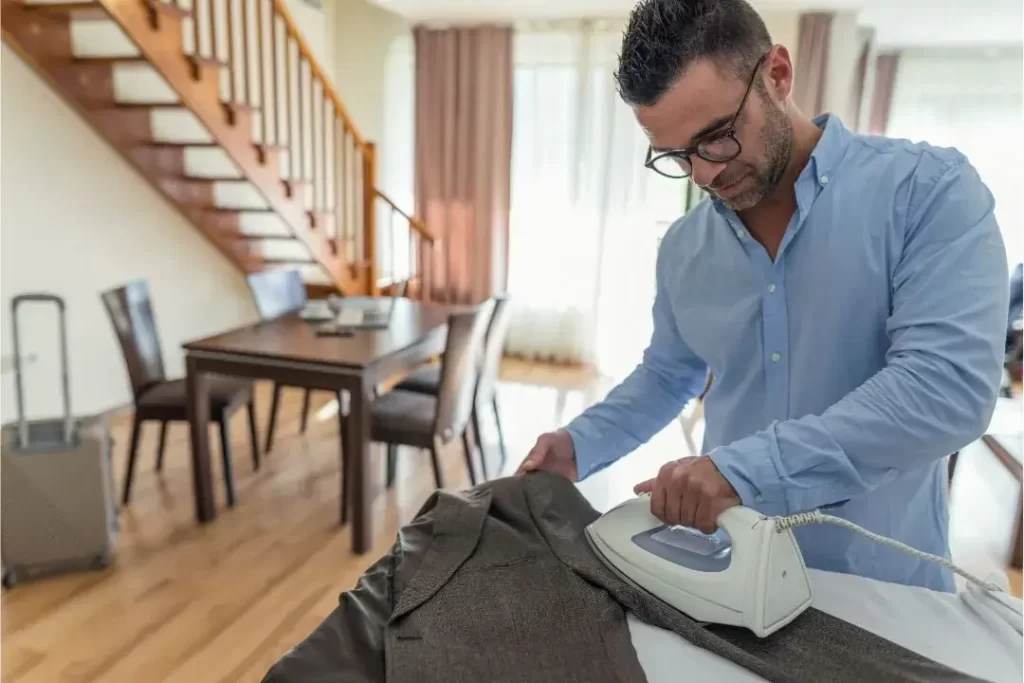
Why Clothing Brands Fail
Top Different Types of Shirts for Women and Men Top Different Types of Shirts for
A well ironed suit jacket manfacturers can do wonders for your confidence and project the right image when it matters the most. No one wants to walk into a job interview or important presentation in a suit with wrinkles or creases. To make sure your suit jacket is looking its best every time, it is very important to know how to iron it properly. In this blog, we aim to provide a detailed, step-by-step guide on how to Iron a suit jacket effectively.
The first step to ironing your suit jacket is to thoroughly inspect its fabric Making. Check the care tag for specific instructions and any symbols, such as a crossed-out iron, which would mean that it isn’t suitable for ironing. Some materials are delicate, so be sure to handle them with care.
To achieve professional results, you need to use the correct tools. The iron should have adjustable temperature settings, a non-stick soleplate, and a steam function. An ironing board with a firm and stable surface, as well as an adjustable height, will fulfill the requirements of this task.
Set the iron to the appropriate temperature based on the suit jacket’s fabric. Once the iron heats up to the desired level, you are ready to start the ironing process.

Dry ironing is a method that doesn’t involve any extra moisture or steam. This technique is suitable for fabrics that don’t require an extra level of care or for those who prefer a crisp finish.
Steamers can be an excellent alternative to an iron when it comes to delicate fabrics or hard to reach areas. The steam penetrates the fibers, relaxing them and removing wrinkles easily.
If you’re working with a particularly delicate fabric, using a press cloth can protect your suit jacket from the heat of the iron by providing a barrier between the jacket and the iron. This method also prevents any potential shine or scorch marks.

Ultimately, the choice between dry ironing, steaming, or using a press cloth depends on your suit jacket material and your personal preference. Test each method on an inconspicuous area, and choose the one that gives you the best results.
Lay the suit jacket flat on the ironing board. Ensure there are no items beneath the ironing board, and position the jacket properly, aligning the seams and edges to avoid any unwanted creases.
Start by popping up the collar and ironing the underside using gentle sweeping motions from one point to another. Then, iron the top side of the collar and fold it down to its original position.

Starting with the left lapel, press and glide the iron from top to bottom, following the contours of the suit jacket. Pay additional attention to the roll line, where the lapel meets the main body of the jacket. Repeat the process for the other lapel and the front panels on either side of the suit.
To iron the jacket sleeves, lay them flat on the ironing board and gently press the iron along the length of the fabric, being careful not to stretch or distort the material. Ensure you iron both the front and back of the sleeves for the best results
When it comes to the back of the suit jacket, spread it out fully on the ironing board and start at the top, keeping in mind the jacket’s natural curve. Work your way down to the bottom hem, paying attention to any vents that may require additional ironing.
After you have ironed all sections of the jacket, double check for any remaining wrinkles or areas that need attention. Once thoroughly ironed, hang the jacket properly on a suit hanger to maintain its shape.

Avoid setting your iron’s temperature too high, as overheating can damage delicate fabrics and leave visible scorch marks on your suit jacket. It is always recommended to start with a lower temperature setting and gradually increase it if needed.
Ironing a suit jacket can be a delicate process, especially when it comes to certain fabrics. Utilizing incorrect ironing techniques may result in damage to your suit jacket. Always refer back to the care tag for specific instructions and practice proper techniques to protect your garment.
For a crisp and polished look, consider using spray starch while ironing your suit jacket. Apply the starch evenly across the fabric before ironing to aid in wrinkle removal and to create a smooth finish.
To maintain its shape, your suit jacket should be hung on a hanger specifically designed for suits when not in use. This helps prevent wrinkles and ensures your suit jacket stays in optimal condition.
To help preserve the longevity of your suit jacket and keep it looking its best, consider having it professionally pressed occasionally. This will ensure that the garment remains in top shape and provides a polished appearance.
Ironing a suit jacket may seem like a daunting task, but with the right tools, methods, and techniques in place, you’ll soon become a pro at ironing your suit to perfection. By following the step by step guide on how to Iron a suit jacket and expert recommendations, your suit jacket will be wrinkle free and ready for any important occasion.
Refining your ironing skills not only influences your personal appearance but also helps preserve the life and quality of your suit jacket. Taking the extra care and effort to properly iron and store your suit jacket ensures you always present yourself at your best. And with these helpful tips, tricks, and precautions in hand, you must now be feeling confident and well equipped to tackle your next suit jacket ironing session in style.
Fabrics like cotton, wool, and polyester blends are generally easier to iron, while delicate fabrics like silk, velvet, or linen may require extra care or a different method such as using a press cloth or steamer.
Always check the care tag on the garment for specific guidance, but as a general rule, choose a lower heat setting for delicate fabrics like silk, a medium temperature forwool and polyester blends, and a higher heat setting for cotton and linen.
For tough wrinkles, try using the steam setting on your iron, or a separate steamer. Apply steam evenly to the wrinkled area before ironing it directly, using gentle pressure. Applying a light mist of water to the wrinkled area before ironing may also help.
Iron your suit jacket as needed, or whenever wrinkles or creases appear. However, try not to over iron to maintain the garment’s integrity over time. Periodic professional pressing is also advisable, especially for delicate materials.
Yes, a steamer can be an excellent alternative to iron, especially for delicate fabrics or hard to reach areas. Steamers are particularly effective in removing wrinkles, as the steam penetrates the fibers and relaxes them, making the process much easier and gentler on the fabric.
Expert Custom Clothing Manufcaturer

Top Different Types of Shirts for Women and Men Top Different Types of Shirts for

What You Must Know About Clothing Samples? Before You Produce a Single Garment: What You

How Much Does It Cost To Make a Hoodie A Complete Cost Breakdown for Custom

Discover the Types of Buttons Discover the Types of Buttons That Transform Style and Functionality
Most Recent Posts
Expert Custom Clothing Manufcaturer
Join our Mailing list!
Get all latest news, exclusive deals and updates.